In the light of technical progress, the fullest act in the life of modern man. Where are the factories, and now, for the most part, is a tower of shopping and entertainment venues, movie theaters and beauty salons. The process for the production of goods is almost entirely mechanized and automated. And in the area of production is gradually replaced by a range of services. The man, however, hours of sitting in the office, trying to come up with an effective method of sales, a marketing course, or you can also obtain cash from foreign wallets. And so he sits in his car with the comfort of a seat in the driver's seat going into the house. Of course, we are perfect for the image, not to mention traffic congestion in the offices, public and motor, which is a large part of the population, and that of t. d., But who do not want to live comfortably?
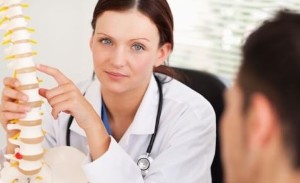
If, however, the benefit of this kind of comfort? In our century, have already stated a century Hipodinimii, which means a ton of nasty consequences. The cardiovascular, the body from obesity, high blood pressure, sciatica, and other diseases as delivered with the car, an office chair and a study room. But it is the most common form of the disease, and what we pay for a sedentary lifestyle, it is a osteocondrose. He is the one who is the subject of this article.
Osteocondrose
What is the osteocondrose? Consider the mechanism of development and types of illness When you heard about the osteocondrose, the first thing I thought about the pain in your back and in your muscles. However, due to the disease directly to the muscle unit will not ring. The pathological changes occur in the articular cartilage, which are available in all of the joints in the body.
The cartilage tissue has no absorption and protection of the resources. In addition, it assigns them to a special secret, which lubricates the joint surfaces, thus, reducing the frictional resistance during the movement of the bones. But, in some cases, the cartilage of the cloth-of-course (dageneraset). In addition, when the metabolic infringements, a lack of certain vitamins and minerals, as well as hereditary and metabolic failure with disturbed nutrition of the tissue of the cartilage, and it loses its strength and elasticity. This condition goes by the name of the benefit.
Thus, the osteocondrose is degeneratUNO-dIPtroticheskie changes to the fabric of the articular cartilage. In theory, the pathological changes may affect any of the joints. But, in practice, osteocondrose most often calls to our spinal column. And depending on which part of the vertebral column is located in the process, are different from the lumbar spine, thoracic spine, and cervical spine osteocondrose.
Think of our spine. It is made up of formations of the bones of the vertebrae. Each vertebra has a body, and some of the notRnocomtparanono. Between the body and the notRnocomtkami there is a hole, through which it passes, and the weight of the spinal cord. The vertebrae are arranged in such a manner that the holes in the form of a hollow tube – the spinal canal. The body of the vertebrae are placed one upon the other, and between them are a layer of cartilage – the intervertebral disks of cartilage. They also play the role of a shock absorber, mitigating the impacts and reducing the work load on your spine during walking or other movements of a person. The ones that have nodnnotunnnoe of the building, and in lots of different sizes. With the exception of a few vertebrae fused together CrestTSnonono-coccygeal department, and the seven elements of the cervical spine,which differ from each other in structure.
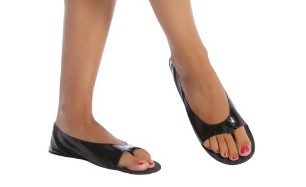
Your spinal column is represented by four departments:
- cervical: (1) to (7 vertebrae);
- of the chest (between 8 and 12);
- the lumbar spine (13, 18);
- of the sacrum, and the coccyx (the department is comprised of real estate property in the member states of the bones, and it is, therefore, not to be involved in a pathological process).
Respectively, osteocondrose of the vertebral column is divided into three main types, which we have set out above.
Types of degenerative disc disease.
It occurs more frequently osteocondrose of the cervix, as well as the cervical vertebrae have a different structure, and a device that supports the lumbar spine, this is developed quite weak. With all the time in the cervical region, or in any other department in the disc of the spine hyaline cartilage begins to uplnotnyatSya, lose their elasticity, and the vertebrae approach each other. The result of this can be nipped in the fibre of a nerve or a vessel. As a result of disturbed innervation, and the supply of the respective organs, leading to disruption in their work, a reduction in the motor activity training, and generates the starting-point of the pain syndrome. In addition, when the displacement of the vertebrae, and they do contact him, can be irritating to the tissue of the muscle in a certain area, which leads to a spasm of the muscles. And, of course, at the end of the disease of the muscular apparatus, and thus, you have to do double work to make up the decrease of the shock-absorbing function of the spine and changing the position of the vertebral bodies.
Along with the choker necklace, very common in the lumbar spine-CrestTSnonoth osteocondrose, which is carried out in the context of the regular loads on your back, weight lifting, and so on.
The chest of the osteocondrose be developed in a way, that the first two are variations of the disease. In addition to this, the diagnosis is difficult and the disease is a number of the symptoms are non-specific, similar to the symptoms of angina pectoris. Particularly, it was created before we dig into that, is the fact that, in the body of the bone, cartilage, nerve fibres, pains in the head, and the spinal cord does not have pain receptors, and, thus, the pain of the osteocondrose is of an indirect nature. OStenoxnondRnoznom are taken into consideration as well some of the varieties of Osteochondropathy, and that they have a number of other etiology. About them we will talk about it in our article.
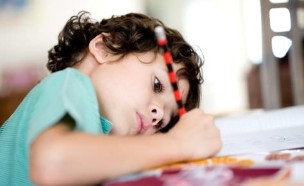
The causes of the disease
The main reason for the development of degenerative disc disease – Hipodinimii – the start of the story. As the saying goes, dviginia – life. The lack of sufficient training of the motor activity may affect the state of our joints and the spinal column? The only thing is, is that our spin has a natural muscular corset that supports your spine and helps you to properly to carry out its functions. However, in the absence of physical exercise, the muscular apparatus is the same, then the spine loses the support of the main load falls on the spinal disks, cartilaginous skeleton, and they will, over time, exhibited degenerative changes.
However, too much of physical exertion, for example, to athletes, to professionals, and it can also lead to degeneration and the degeneration of the articular cartilage, and, therefore, lead to the development of degenerative disc disease, and other Osteochondropathy. Respectively, in relation to this, you will need to keep to the golden mean, in order to prevent from health problems.
An important role in the development of degenerative disc disease plays in the life-style of the modern man. In addition to the lack of adequate training for motor activities, these may include unbalanced diet, lack of vitamins and minerals in the diet, tABAparanoparahaveRmensagem, the consumption of alcohol and the use, in everyday life and in the workplace, ragged furniture, a dream, a soft mattress and the usual mistakes of the posture and driving conditions of the job and t. d.
In maré, rio de janeiro, all of this, inevitably, leads to a disturbance of the nutrition of the articular cartilage, the loss of quality characteristics (durability, elasticity, flexibility, resilience and the development of degenerative disc disease. Flat feet – is still a very common cause of degenerative disc disease. Apparently, the relationship between the deformation of the foot you may have pain in the back, and even more so in the neck? It turns out that the most straight forward. Stop, human nature is designed in such a way that it is able to distribute properly the weight of your body when you walk. In the process of changing to a bone of a foot, formed of two arc – length and cross-sectional. Because of this structure, coupled with the rise of the curves for the physiology of the spinal column, it is possible PRYamnoxnoWdmensagem person. If the arch of the foot for one reason or another, it "flattens" the whole of the cargo moved back to the column. And it's a pain in the head, and the limitation on the amount of movement, and even migraine headaches.
In the past few years, many of the scholars interested, in large part, to the development of the degenerative disc disease affects the inheritance.
The symptoms of degenerative disc disease.
How to recognize osteocondrose? The symptoms of degenerative disc disease is a very wide range of dishes. Even though most of us only know about the main symptoms of this disease include: muscle aches and pains and difficulty in movement. On the other hand, we don't wonder very detailed, talked about the mechanism of development of degenerative disc disease. After all, one of the signs of the disease are directly related to the processes that take place during the course of the disease.
So, how do we know all of the symptoms of degenerative disc disease are related with compressed blood vessels, and nerve fibers, which results in a breach of, the supply, and nerve supply of the respective muscles, organs and tissues. Thus, the pathological changes will address not only the muscle of the unit. Therefore, the symptoms of degenerative cervical disc disease is, and frequent headaches, and even shortness of breath along with pain in the muscles of the neck and shoulder area.
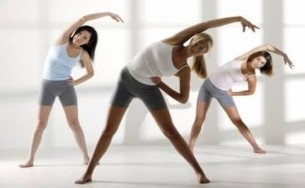
The pain in the head when the cervical spine osteocondrose have their origin at the periphery: the flow of blood into the tissues of the brain is disrupted, and the nerve cells experience hypoxia. This is associated with dizziness and, at times, can be as much as an unconscious state. Circulatory disorders, in combination with the collar of the noSTEnoxnondRnoznom, in some rare cases were it can also lead to a reduction in hearing of the patient, the violation of ordination of movement, instability, gait, hoarseness of the voice. Snoring can also testify to the development of degenerative disc disease.
If you dIPtroticheskie the changes that affect the discs of the spinal column, rib cage bones , so osteocondrose you will have pain in the back, its location, attached to the asthmatic component, and the pains of the heart. Sometimes, a patient may occur as shortness of breath and arrythmia. Many times patients are confused by the emergence of the KardUlgii with coronary artery disease (chest cavity of the frog. But you've got that kind of heart, pain of the head, there are still a number of distinctive features. Subjectively, they can be seen as a stake in his chest. Reception of nitrates, and other antianginal-of-funds, does not relieve the pain. When the angina, the person to increase the anxiety, and it even appears that the fear of death. The chest of the osteocondrose do not have these symptoms at all. Sometimes Kardyalgia caused noSTEnoxnondRnoznom of the spinal column, it can last for a few days, but it's not a threat to the life of a person. Ischemic pain in the heart, a short one, but the neglect of it may lead to the development of myocardial infarction, and later given medical assistance by an episode of angina may be the leading cause of death.
Osteocondrose the lumbar-sacral spine, characterized by pain in the lower part of the back. The pain can be irradAIRnoVAtü in the lower limbs. The patient may also experience difficulty in walking, which is related to the reduction of the tone in innervated according to the segment of the spinal cord to the muscles. The pain of have a handle on the nature. At times, the patient is difficult to straighten the back, to get out of bed, or to change the position of the body. The reflexes of the lower extremities during the osteocondrose the lumbar-sacral department is small.
Osteochondropathy
We've talked about in this article is for this type of issue, such as a child's osteocondrose. The symptoms and treatment of this condition is a bit different from that of the adults. This is mainly due to the fact that the concept of early childhood, degenerative disc disease involves a range of Osteochondropathy. The most common of these are:
- the disease, First,
- the disease of Osgood–Schlatter's disease,
- of the disease, the President May,
- with the disease of No-Calvet, Peter.
The disease is First common in children between the ages of 8 and 12 years of age, but it can also develop in adulthood, and that very rarely happens. When this disease is beaten a spongy substance of the bones of the foot. And, essentially, there are two main types of the disease. When the disease is First first is is hit LadLevidNaya the bone. If the condition is of the second type, or of the pathological changes affecting the bones of the metatarsus.
The disease, Schlatter's disease, reaches the tibial bone in the region of the knee of a shot, and if it develops in the age group of 11 to 14 years of age or older. PrédRASPnoLaGaudimand factors of sporting activities (football, soccer, basketball, running, jumping, and PR.). Also, in case of the occurrence of reported disease could be due to a mismatch in the speed of growth of the bone in adolescents, and the development of a fabric of a cartilage.
Of the disease, the President May, or curvature of the spine, it is one of the varieties of breast-feeding, degenerative disc disease. Develop this condition, usually in children and adolescents between the ages of 8 and 14 years of age, however, for a long time, it is not the child, nor the parent may not notice significant deviations. Thus, a symptom is a violation of the posture of the child.
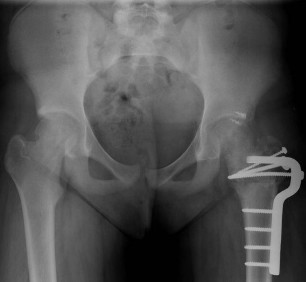
With the disease of Legg-Calv-Perthes is a condition that hits at the thigh, and, more precisely, its head, in an area that is cartilage tissue. Most commonly, the disease affects children from 4 to 14 years of age and is manifested by them, limping. With this condition, and occur in necrotic changes in the tissues of the femoral head, which are non-communicable diseases (aseptic), and nature. Most often, the cause of the disease is a hereditary predisposition. In the first stage, the child begins to PRpara armyvet. Later, the child appears in pain in the region of the hip joint and the knee joint, especially during movement.
In the prevention of degenerative disc disease in young children is a moderate physical exercise, wear comfortable shoes, for the correction and the maintenance of the correct posture, that is, a particular set of exercises. Osteocondrose, and the pregnancy is, without a Doubt, if a woman suffers from noSTEnoxnondRnoznom, planning a pregnancy, she should first make sure the treatment of this disease. Although, eventually, a cure for that disease, it is not possible, as well as to fully restore the articular cartilage is not possible.
Along with the enough activity of the body, moderation and balance in food to help you get back to a normal weight and, later on, to keep it under control. The normal weight – the key to your well-being and the health of your back. And have a healthy back – and it's sturdy restorative sleep, and the absence of pain in the head, and for the prevention of diseases of the musculoskeletal system. Loving yourself, pay more attention to and take better care of their health.































